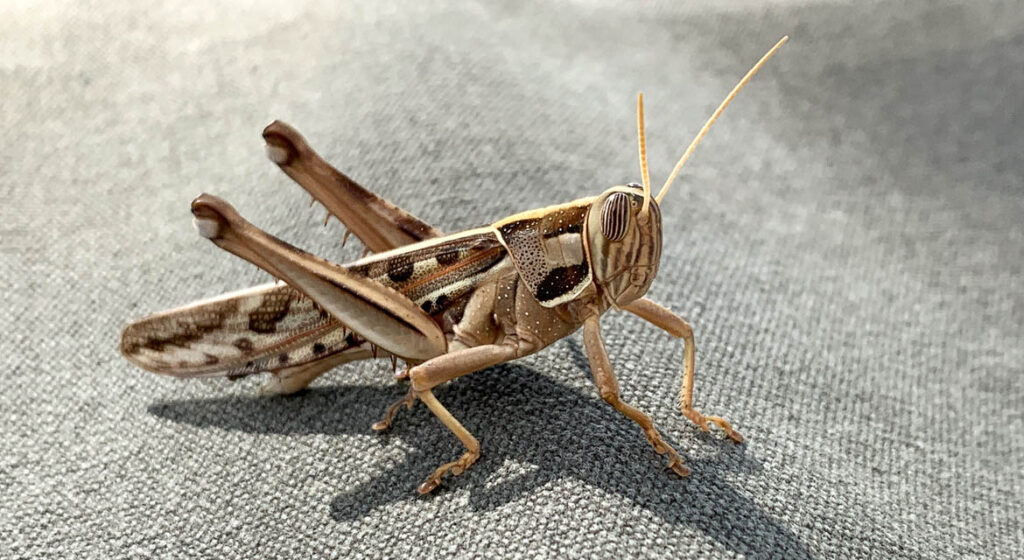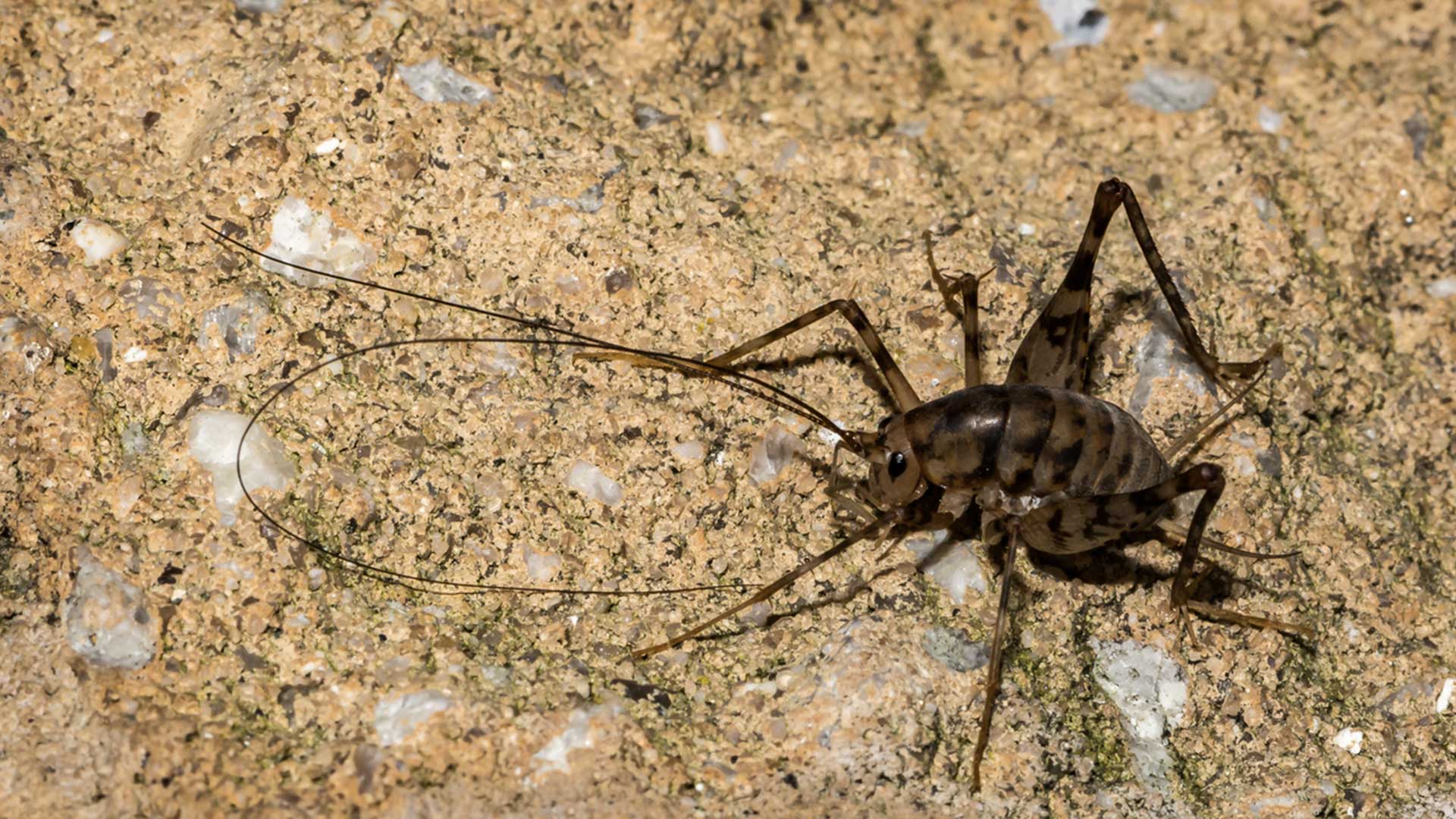
How Can I Prevent Cricket Infestations?
Prevent cricket infestations by maintaining a well-groomed lawn, removing debris, and sealing entry points to eliminate hiding spots and prevent their entry into your home. Additionally, eliminate potential food sources by storing food properly, promptly cleaning up spills, and ensuring proper garbage disposal to deter crickets from infesting your living space. Here are three key points to keep in mind:
- Prevent cricket infestations by maintaining a well-maintained lawn, removing debris, and trimming vegetation to eliminate hiding spots and breeding grounds.
- Seal entry points in doors, windows, foundations, and utility openings to prevent crickets from entering your home.
- Eliminate food sources by storing food in sealed containers, promptly cleaning up spills and crumbs, and properly disposing of garbage to deter crickets.
Cricket Infestation Overview
Crickets, with their characteristic chirping sounds and occasional leaps, can be both a nuisance and a source of frustration for homeowners. Whether it’s the common house cricket or the field cricket, these pests can multiply rapidly and create havoc in living spaces. But taking proactive measures to prevent cricket infestations can save you from the headache of dealing with these unwelcome guests.
In this article, we’ll explore a range of practical and effective strategies to help you keep crickets at bay. From simple home maintenance tips to natural deterrents and targeted treatments, we’ve got you covered with the knowledge you need to prevent cricket infestations and maintain a cricket-free home environment.
Common Signs of Cricket Infestations
Identifying the telltale signs of an infestation is critical to taking prompt action and getting rid of these pesky insects. Here are some common indicators of a cricket infestation:
1. Loud Chirping Sounds
Crickets are known for their distinctive, loud chirping sounds, which they use to attract mates or communicate with others. If you hear chirping sounds in or around your home, especially at night when crickets are most active, it may be a sign of a large cricket presence. To some, these chirps can sound soothing, but to others, they can cause irritation and trouble with sleep. Pay extra close attention to if the chirps are coming from inside your house, as that is a good sign that the infestation has become more severe and moved indoors.

Truly Nolen GUARANTEE
If you’re not completely satisfied, you’ll get a full refund on your most recent service with our 100% money back guarantee.

$50 Off Year Round Pest Control
Truly Nolen is a family-owned company with 85 years of experience providing the best pest control. If you’re not completely satisfied, you’ll get a full refund on your most recent service with our 100% money back guarantee.
2. Dead Crickets
Another common sign of a cricket infestation is finding dead crickets inside houses. Crickets tend to die quickly after entering a new environment, and this can lead to a buildup of dead insects inside your home. If you notice these insects lying around, particularly in your basement or other damp areas, it’s a sign of a cricket problem.
3. Damage to Fabrics
Crickets like to chew on fabrics, such as clothes, curtains, and upholstery. If you notice holes or chew marks on clothes or other textiles in your home, it may be due to a cricket infestation. These pests can be especially destructive to items that are stored in damp or dark areas.
4. Pest Droppings
Crickets produce waste in the form of small black pellets or droppings. You may notice these droppings around your home, particularly in areas where crickets are active, such as basements or attics. These droppings can be a breeding ground for bacteria and pose a health risk if not cleaned up promptly.
If you notice any of these signs, it’s essential to take action right away to get rid of crickets. By promptly identifying and addressing a cricket infestation, you can keep your home safe and comfortable and prevent further damage.
Cricket Prevention Strategies
Preventing cricket infestations is much easier than dealing with them once they have already taken hold in your home. By taking the appropriate measures, you can reduce the risk of an infestation and keep these pests out of your space.
Sticky Trap Method
Sticky traps are an effective and safe solution for preventing cricket infestations. These traps work by using a sticky adhesive substance to trap crickets and prevent them from moving around freely in your home. Sticky traps can also be placed in areas where crickets are likely to be present, such as near doors, windows, and along baseboards.
The key advantage of using sticky traps is that they do not require chemicals or pesticides, making them a safer option for those with pets or small children. Additionally, sticky traps can be an eco-friendly option as they are non-toxic and do not harm the environment.
Remove Cricket Attractants
When it comes to preventing cricket infestations, many homeowners focus on removing potential breeding grounds for these pesky insects. But did you know that something as simple as keeping your outdoor lights on or leaving pet food out overnight could also attract too many crickets to your home?
Bright lights are a common attractant for crickets, particularly those that are attracted to outdoor environments, like field crickets and camel crickets. These types of crickets are typically drawn to light sources at night and may be unable to resist the bright glow of outdoor lights. By leaving your porch light on or installing bright floodlights in your yard, you could unwittingly invite these insects into your home.
Similarly, leaving pet food out overnight can also attract crickets to your home. Many types of crickets feed on plant matter and may see pet food as a tasty meal. If you have outdoor pets, it’s important to ensure that their food is only left out during meal times and is not left unattended for extended periods.
Moisture Control
One commonly overlooked factor that can contribute to cricket infestations is moisture control. Crickets thrive in moist environments and can reproduce rapidly when the conditions are right. One place where moisture can accumulate is in wood piles. As wood absorbs moisture from the atmosphere, it creates a moist environment that is perfect for crickets to lay their eggs and multiply.
To prevent infestations, it’s important to control moisture levels and keep wood piles dry. One way to do this is to store wood in a covered area, such as a shed or garage. This will protect it from rain and other moisture sources, keeping it dry and less attractive to crickets. If you must store wood outside, make sure it is elevated off the ground and covered with a tarp to prevent direct exposure to rain.
Similarly, if you have moist or wet areas in your home, crickets may gather indoors. Be sure to check your home for leaks or flood damage to ensure your indoor environment stays dry and cricket-free.
Diatomaceous Earth
Diatomaceous earth is a natural substance that has gained increasing attention as an effective and safe remedy for pest control. Made up of the fossilized remains of tiny aquatic organisms called diatoms, diatomaceous earth is a fine powder that is rich in silica and has a range of beneficial properties.
One of the most significant uses of diatomaceous earth is as a pesticide. Unlike chemical insecticides, which can be harmful to humans and pets, diatomaceous earth works by dehydrating and killing insects on contact. This makes it an effective option for controlling a variety of pests, including beetles, ants, bed bugs, fleas, and cockroaches.
To use diatomaceous earth as a pesticide, simply apply a light dusting to infested areas or create a barrier around your home. When insects come into contact with the powder, it damages their outer shell and causes them to die within a few days. Unlike chemical pesticides, diatomaceous earth has no residual toxicity and is safe to use around children and pets.
Professional Treatments To Remove Crickets
Dealing with crickets everywhere can be a frustrating and challenging task, especially if you’ve already tried a wide range of do-it-yourself methods without much success. When it comes to removing crickets from your home or yard, sometimes it’s best to turn to the professionals. Here are some of the top treatments that pest control experts use to eliminate cricket infestations:
1. Chemical Treatments
Pest control companies often use chemical treatments that are specifically designed to target and eliminate cricket populations. These products can be highly effective, but they must be used correctly and by licensed professionals to ensure that they aren’t harmful to humans or pets.
2. Traps
Professional-grade traps are a popular choice for those looking to remove crickets from their property. These traps use various attractants, such as pheromones or food, to lure crickets in and prevent them from escaping. Some traps work by killing crickets, while others trap them so they can be released outside.
3. Fumigation
If your cricket infestation is severe or in hard-to-reach areas, fumigation may be necessary. This involves sealing off the affected area and pumping in a gas that is toxic to crickets but safe for humans. Fumigation should only be done by licensed professionals as it can be dangerous if not done correctly.
4. Integrated Pest Management (IPM)
IPM is a comprehensive approach to pest control that involves multiple treatments and strategies to eliminate cricket infestations. This can include chemical treatments, traps, habitat modification, and natural control methods such as introducing predators or using essential oils.
When it comes to removing crickets from your home or yard, it’s essential to work with a licensed pest control professional who can assess your situation and recommend the most effective treatment options.
Understanding How To Get Rid of Crickets
Learning to identify common signs of cricket infestations is key to maintaining a peaceful and cricket-free home environment. By listening for chirps and looking for signs of cricket activity, you can take prompt action to address the problem. Implementing preventative strategies to make your home less attractive to crickets and using natural deterrents can significantly reduce the risk of infestations.
In cases of severe infestations or unsuccessful DIY methods, it’s advisable to seek professional assistance. Pest control experts can offer targeted treatments to effectively eliminate cricket infestations. With the right cricket prevention measures and appropriate treatment, you can successfully keep these bugs at bay and enjoy a pest-free living space.

$50 Off Year Round Pest Control
Truly Nolen is a family-owned company with 85 years of experience providing the best pest control. If you’re not completely satisfied, you’ll get a full refund on your most recent service with our 100% money back guarantee.
Frequently Asked Questions
How do I get rid of crickets in my home?
To get rid of crickets in your home, you can start by removing their food sources, reducing moisture, and sealing entry points. Additionally, using insecticides or traps specifically designed for crickets can help control the infestation.
What attracts crickets to my home?
Crickets are attracted to areas with abundant food sources like vegetation, organic matter, or even pet food. They are also drawn to moisture, warmth, and areas with hiding spots. Outdoor lighting can also attract crickets, leading them to enter your home.
Are crickets harmful to humans?
Generally, crickets are not harmful to humans. They do not bite or sting and are not known to transmit diseases. However, their chirping sounds can be annoying, and large infestations may cause damage to fabrics, paper, or certain plants. Learn more!
How long do crickets live?
The lifespan of crickets can vary, but on average, adult crickets live for about 8 to 10 weeks. However, some species of crickets can live up to several months.
How can I prevent cricket infestations?
To prevent cricket infestations, you can take several steps. Keep your home clean and free of clutter, especially in areas where crickets might hide. Seal cracks and crevices around windows, doors, and foundations to prevent their entry. Remove outdoor debris, trim vegetation, and reduce excessive moisture in and around your home. Learn more about crickets

